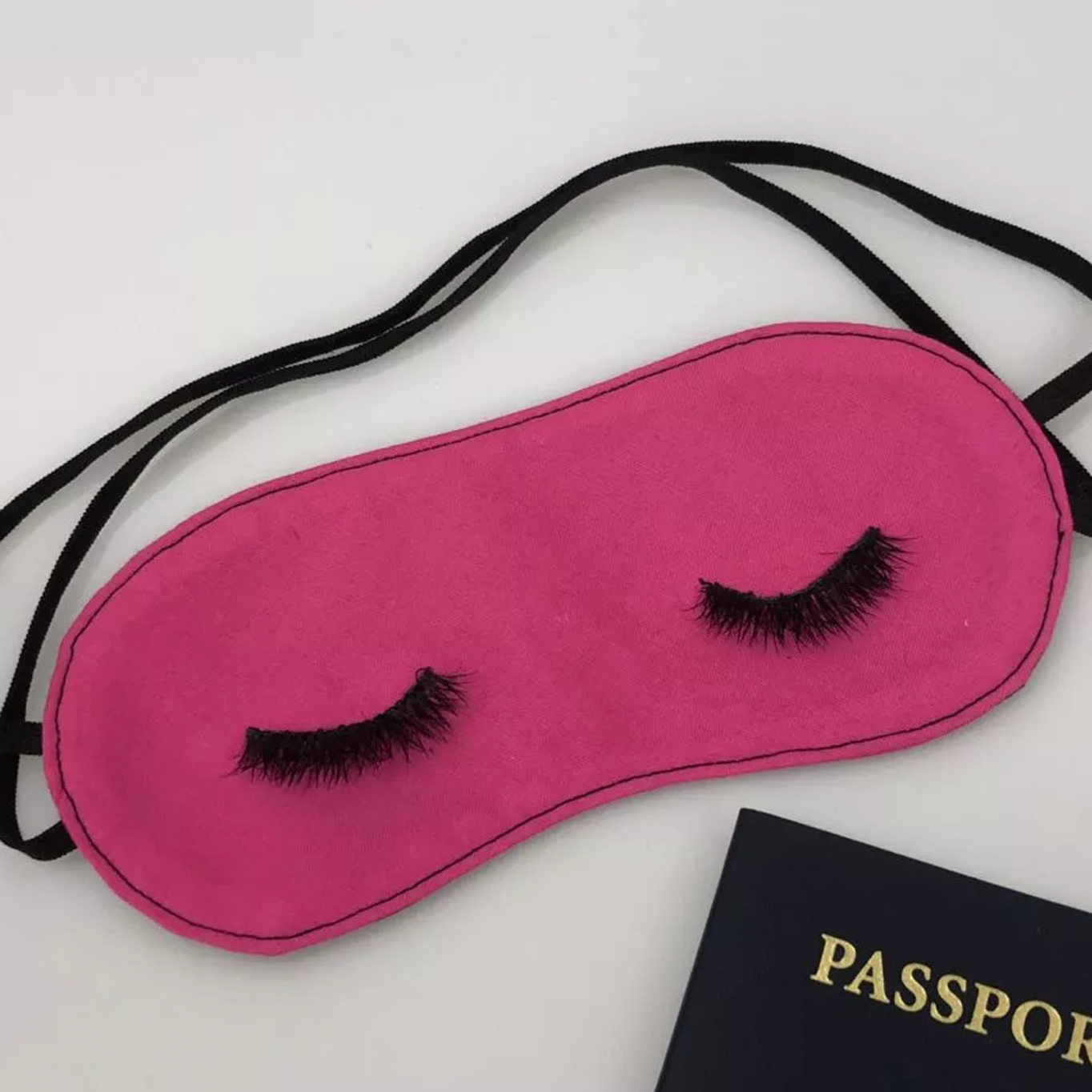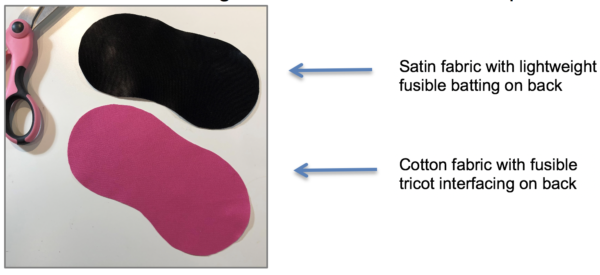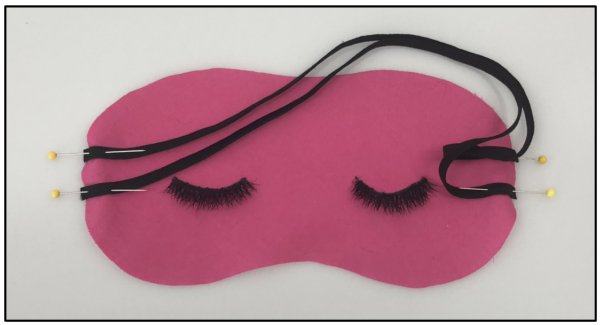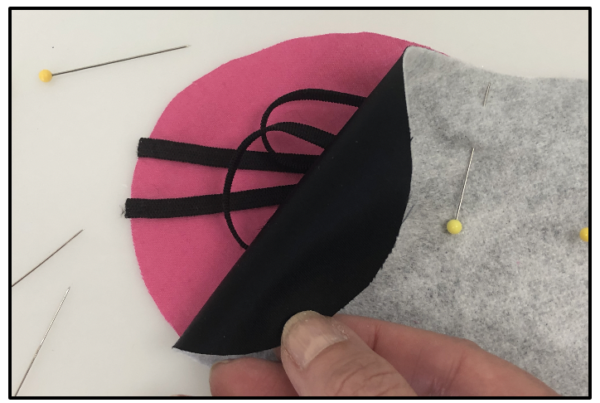
For those longer flights when you want to take a snooze, this eye mask will allow your dreams to take flight!
The top side of the eye mask features false eyelashes, stitched on by machine, for a little bit of fun. The back side of the eye mask is made from satin, so it is smooth against your skin. Two elastic bands, instead of just one, help keep the mask in place while you sleep. You’ll look like a sleeping beauty, for sure!
Shopping List:
Everything you need to complete this project in one place. Use this convenient checklist to ensure you have all the required materials in your sewing room, or take it with you when you shop for supplies.
- 6” x 10” (15cm x 25cm) solid colour cotton fabric for the front side of mask (Purchase ¼ yard, fat quarter, or use leftover fabric scrap)
- 6” x 10” (15cm x 25cm) satin fabric for the back of mask (this touches your face) (Purchase ¼ yard, fat quarter, or use leftover fabric scrap)
- 6” x 10” (15cm x 25cm) piece of fusible tricot interfacing* (Pellon® Easy Knit®) (Purchase ¼ yard or use leftover scrap)
- 6” x 10” (15cm x 25cm) piece of lightweight fusible batting (Purchase ¼ yard or use leftover scrap)
- 6” x 10” (15cm x 25cm) piece of lightweight tear-away stabilizer
- One pair of purchased false eyelashes
- Two 13” (33cm) pieces of elastic ¼” wide (7mm wide)
- All-purpose thread
- SINGER® Universal needle, size 9 or 11
- Hand sewing needle
- Open Toe Foot (optional)
- Eye Mask pattern template
*Tricot interfacing is a soft, stretch knit interfacing that will provide stability to the fabric without making it stiff. Using it on the eye mask will help make the mask fit nicely against your face.
Eye Mask Pattern Template
- Cut out pattern on solid line
- Dotted line represents stitching line
- Seam allowance is ¼” (7mm)

Sewing Instructions
- Apply the fusible tricot interfacing to the wrong side of the solid colour fabric, following the interfacing manufacturer’s recommendations for application.
- Apply the lightweight fusible batting to the wrong side of the satin fabric, following the batting manufacturer’s recommendations for application.
- Using the pattern template (provided with these instructions), cut one eye mask from the solid colour fabric that has interfacing on the back.
Cut one eye mask from the satin fabric that has batting on the back. Set the satin piece aside.

- Place a piece of tear-away stabilizer underneath the eye mask front fabric. Place the false eyelashes onto the front of the solid colour eye mask front fabric, positioning them as desired.
Note: As false eyelashes usually already have a little bit of temporary adhesive on the back, they should stay in place well enough for sewing.

- Thread the top of the machine and bobbin with all-purpose thread. Remove the All-Purpose Foot and attach the Open Toe Foot, if desired. (The Open Toe Foot will provide a clearer view of the sewing area as you stitch the eyelashes on to the fabric). Set your machine for a zigzag stitch, with width set to approximately 1.2mm and length set to 1.0mm.
- Zigzag across the top of each false eyelash, sewing very slowly. You may need to stop every few stitches, turn the handwheel toward you to lower the needle into the fabric, and then raise the presser foot lifter to gently pivot the fabric. Lower the presser foot and resume sewing again until you have sewn all across the top of the eyelash. When finished, carefully remove excess stabilizer.
Note: Since the area to be sewn is so small, don’t backstitch at the beginning and end of the stitching. Instead, use a hand sewing needle to pull the upper thread tails (at the beginning and end) to the back side of the fabric and then tie off.

- Pin the ¼” wide (7mm wide) elastic strips on each end of the eye mask front, as shown. Make sure the elastic isn’t twisted before you secure it with a pin. Stitch to secure them in place.

- Place the eye mask satin fabric onto the eye mask front fabric, right sides facing. Pin them together.

- Set the machine for straight stitch with the All-Purpose Foot. Change the stitch length to 2.0mm. Sew all around the mask, leaving an opening approximately 1½” (4cm) for turning right side out. Clip small notches into the seam allowance all around the mask, being careful not to cut into the stitching line.

- Turn right side out, then press carefully, taking care not to press the false eyelashes. Hand sew the opening closed. Topstitch around the eye mask to finish which will also help add more security for the elastic bands.
